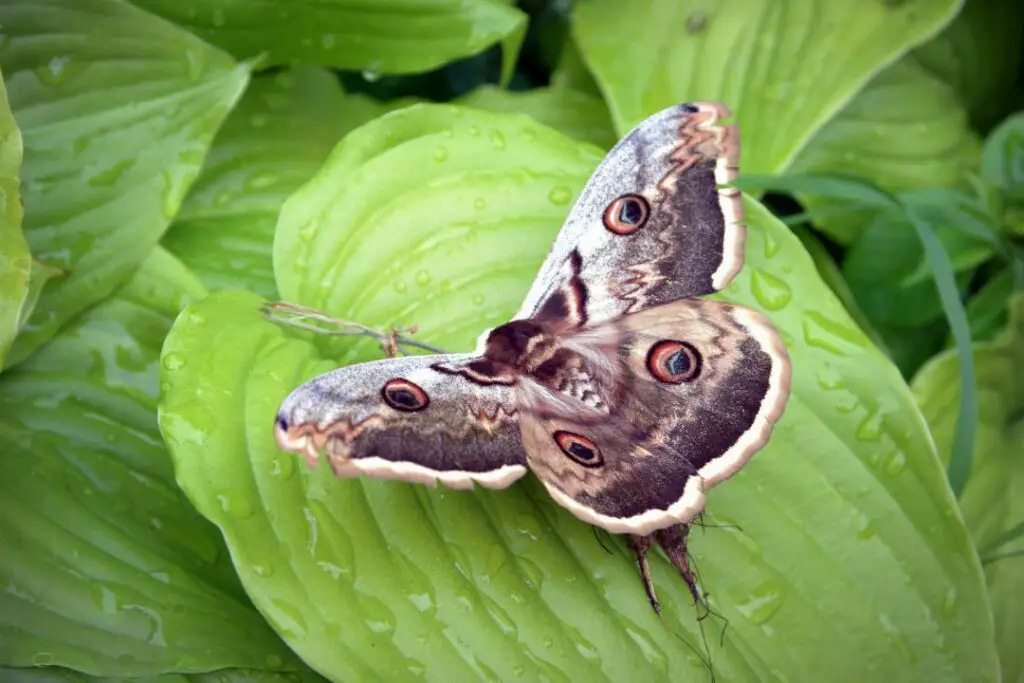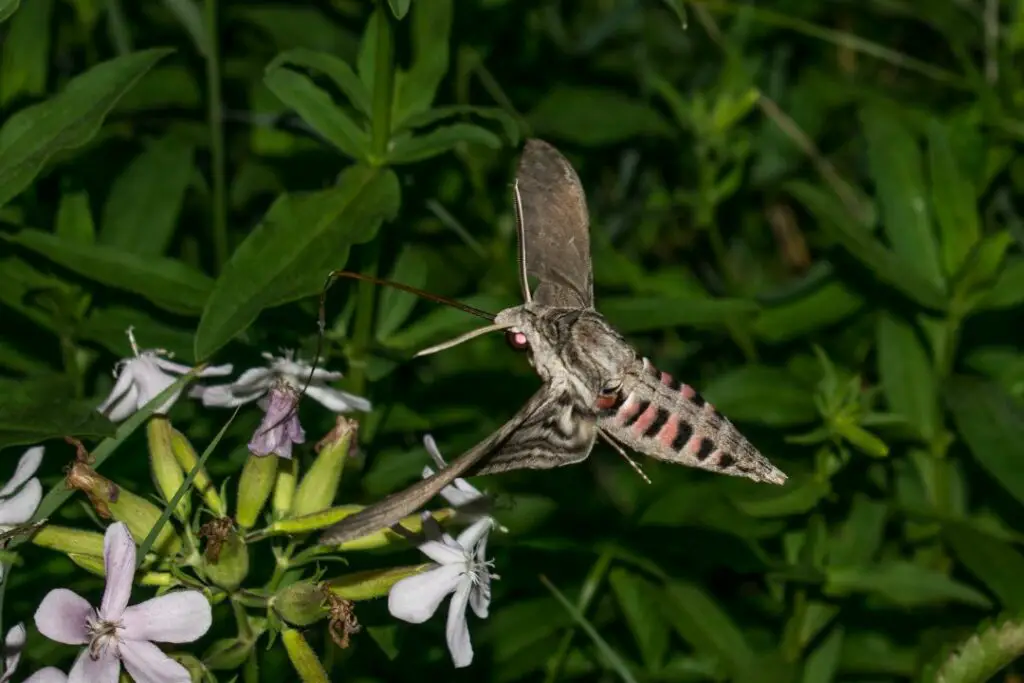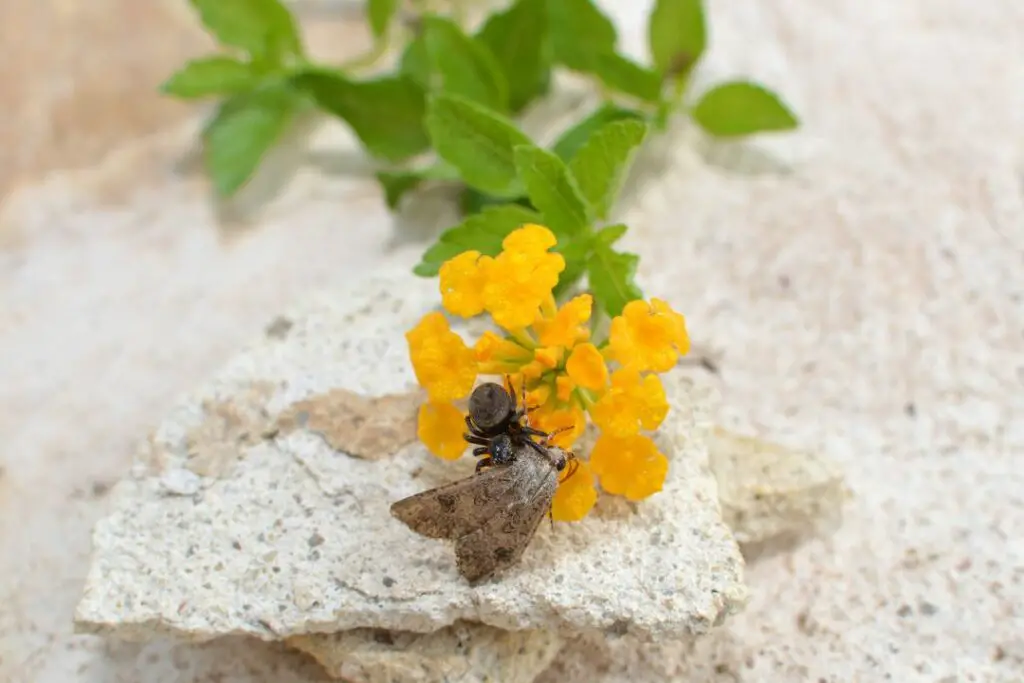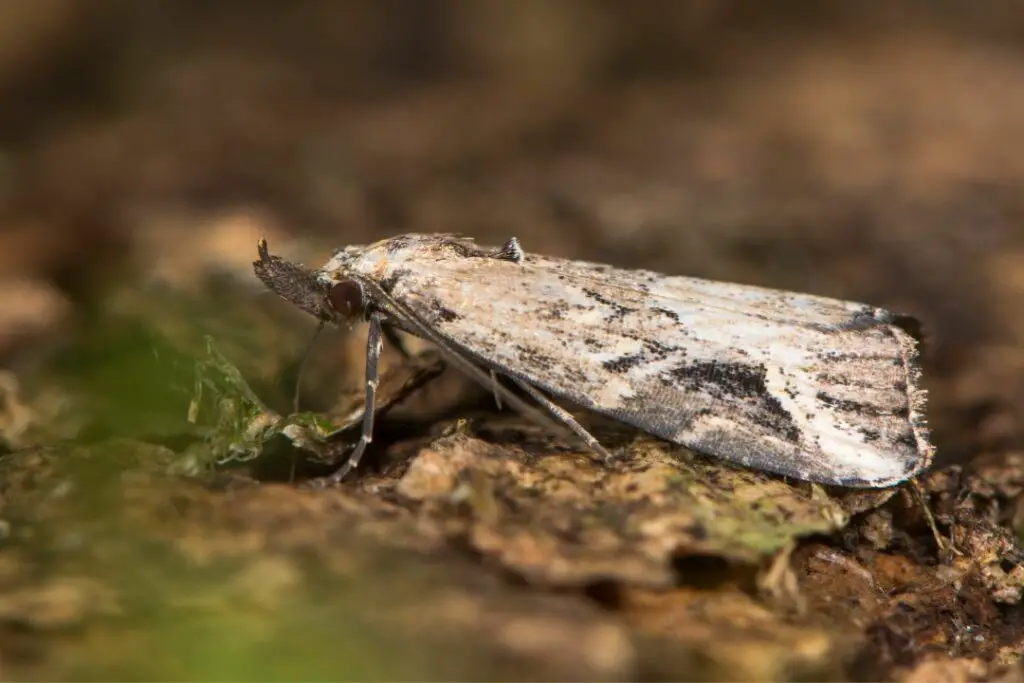Are you wondering what’s munching on your garden plants under the cover of darkness? Or maybe you’re curious about those fluttery night-time visitors who seem to dance around your outdoor lights?
Well, you’re in the right place. We’re diving into the mysterious world of moths and their diets.
Moths consume nectar, but caterpillars (their larval stage) will eat plants ferociously to eventually get the energy they need to turn into a moth or butterfly.
If you’re a gardener, understanding what moths and their caterpillar offspring eat can help you protect your precious plants. For wildlife enthusiasts, it’s a fascinating look into nocturnal feeding habits.
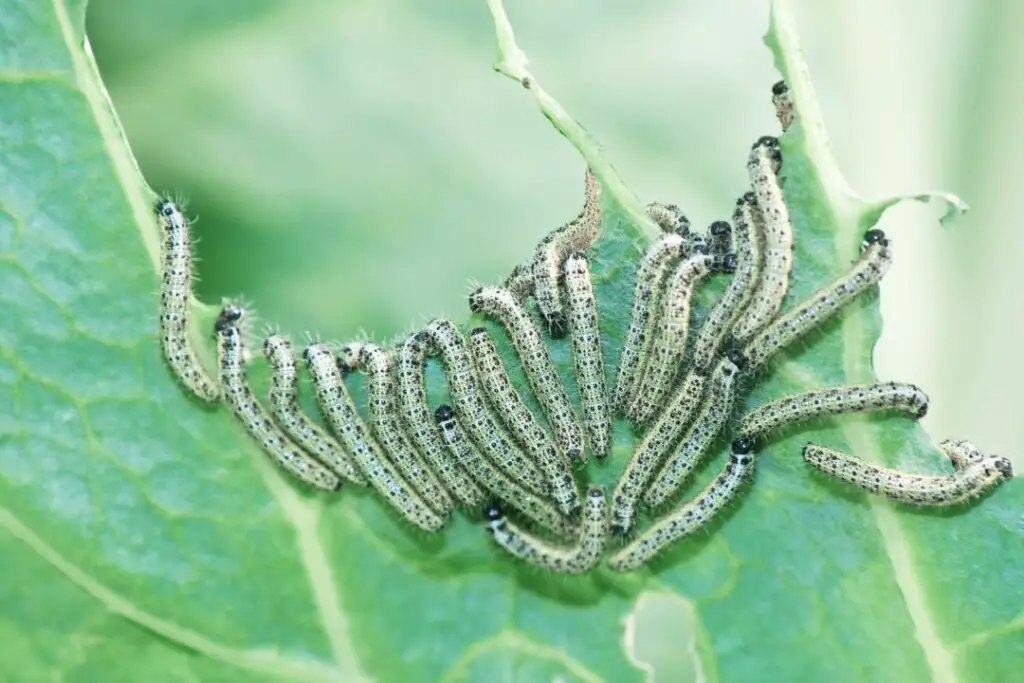
Do Adult Moths Eat Plants?
Let’s explore the diets of adult moths and their larval form, the caterpillar, to find out what’s on the menu.
Nectar lovers
Most adult moths are all about that sweet, sweet nectar. They’re like the night-time equivalent of butterflies, flitting from flower to flower in search of a sugary fix.
The proboscis is used for nectar slurping. Think of it as a built-in straw that uncoils to sip up nectar deep within flowers, a marvel of insect engineering.
Plants like primrose and thyme are favourites, offering a buffet for our nighttime friends.
And they’re pollinators, too. They visit a wide range of plants to make sure the hard work never stops as the bees rest through the night.
Adult Elephant hawk moths are a perfect example. You’ll see them hovering over flowers like a hummingbird to sip nectar with their long proboscis at dusk or dawn.
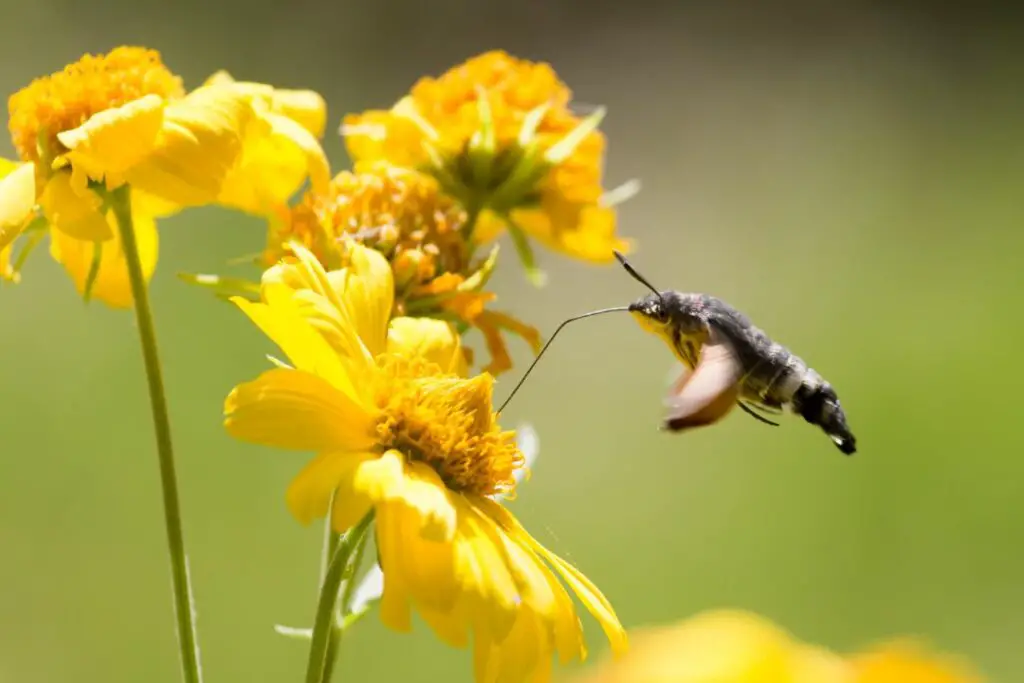
But it’s not just nectar
Some moths are into tree sap, plant juice, and even rotting fruit. They’re all packed with energy and nutrients, perfect for fuelling the moth’s energy-intensive day.
Some moth species aren’t even equipped with a mouth, with their sole purpose being to reproduce before expiring.
But one particular moth stands apart with a genuinely peculiar adaptation.
The blood-drinking vampire moth
Just when you thought you knew moths, along comes the Vampire Moth to shake things up.
This moth species has evolved to drink blood—yes, you read that right.
While it’s not their primary food source, they have developed a proboscis that can pierce the skin of mammals to get to the good stuff.
It’s like a tiny, winged Dracula and as creepy and cool as it sounds. Check it out in all it’s bloody gory below.
What About Those Hungry Caterpillars?
Ah, caterpillars—the squishy, wriggly, leaf-munching larvae of moths and butterflies.
But what’s on the menu for these little guys? Is it all leaves and greens, or is there more to their diet?
Leaf munchers
When you think of caterpillars, you probably picture them munching away on leaves, and you’d be mostly right. These herbivores feast on a wide range of plants.
Those tiny jaws aren’t just for show! Caterpillars use their mandibles to tear off pieces of leaves, making them the enemy of many a gardener.
If you’ve got oak, birch, or hawthorn trees in your garden, you’re running a caterpillar café.
These trees are popular host plants for many moth caterpillars. So, these trees are a great start if you want to attract more wildlife to your garden.
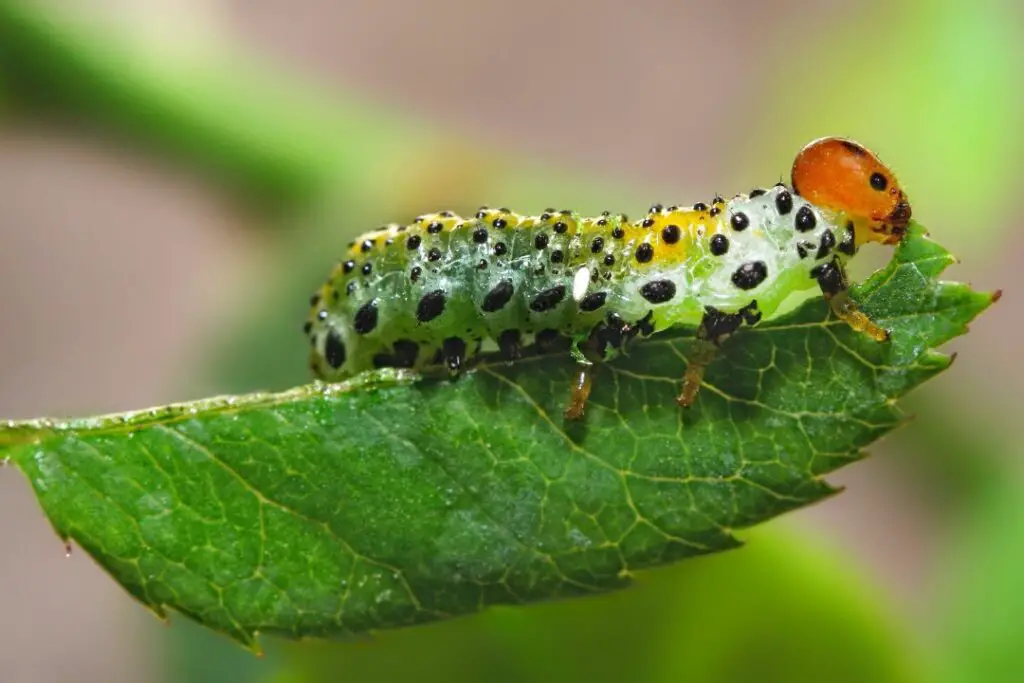
Beyond leaves
But not all caterpillars are leaf aficionados. Some have more exotic tastes.
Certain species prefer the crunch of a stem or the softness of a flower. They’re not picky eaters and will go for various parts of a plant. It’s like a salad bar but for caterpillars.
And then there are the goth caterpillars. These little guys feed on rot and other decaying plant material.
They’re the cleanup crew of the caterpillar world, breaking down organic matter that other critters won’t touch.
The carnivores
In habitats where plant food is scarce or too competitive, these caterpillars have adapted to find another food source.
And what’s more abundant in the insect world than other insects?
They’ll snack on soft-bodied insects like aphids, scale insects, and even other caterpillars. Some have been known to eat insect eggs, making them a sort of natural pest control.
Here are a few of the most fascinating and honestly gruesome examples.
- Hawaiian Eupithecia – This native of Hawaii is a master of disguise. It mimics twigs and waits patiently for an unsuspecting insect to come by. Once the prey is within reach, it strikes like something from a sci-fi movie.
- Hyposmocoma Species – Also hailing from Hawaii, some Hyposmocoma caterpillars are known to spin silk traps and wait for ants or other small insects to get stuck. It’s like a mini spider web but for caterpillars.
- Spotted Apatelodes – This North American caterpillar actively hunts its prey, which includes other caterpillars.
*Additional reading – You can meet the full lineup of bug-eating moths and caterpillars here.
How to Stop Caterpillars from Eating Your Plants Without Harming Them
So, you’ve got a caterpillar problem. These little munchers are feasting on your prized plants, and you’re not thrilled about it.
But hey, you’re an animal lover and don’t want to harm them. What to do?
Don’t fret; there are humane ways to keep your garden safe while letting caterpillars live their best lives. 🌿🐛
Row covers
These are lightweight covers that can be placed over your plants. They allow sunlight and water to reach the plants but keep caterpillars at bay.
Collars
You can also use collars made of cardboard or aluminium foil around the base of plants. This makes it difficult for caterpillars to climb up.
Garlic Spray
A spray made from garlic can deter caterpillars. It’s like adding too much hot sauce; they won’t want to eat it!
Neem Oil
This natural oil disrupts the life cycle of caterpillars but is less harmful than chemical pesticides.
In Conclusion
So, there you have it, a deep dive into the fascinating world of what moths and their caterpillar counterparts eat.
Whether you’re a gardener, a wildlife enthusiast, or just curious, understanding these diets can offer valuable insights for attracting or deterring these vital critters.
Want to find out more about moths? Head to our lineup of animals that kill and eat moths in your garden.

